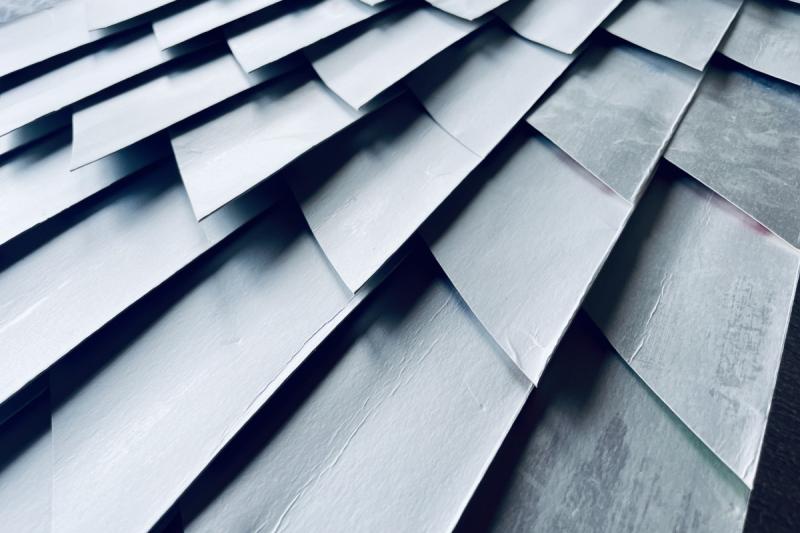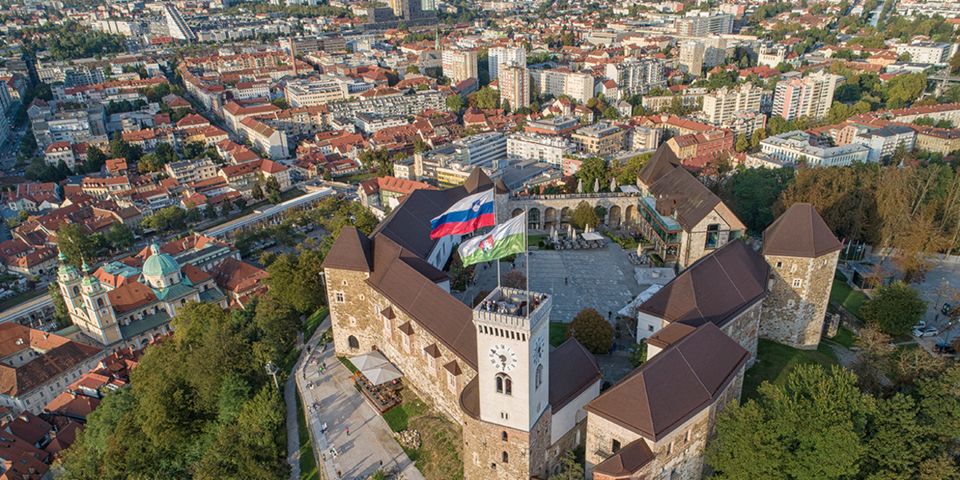Boris Beja: Brik Collapse
The artistic project Brik Collapse is a continuation and conceptual expansion of the project Plastic Fantastic, which Boris Beja has been developing over the past year and which was presented for the first time last year in the City Gallery of Ljubljana. The project expands its conceptual framework with each new realisation, but it always reflects the fact that the world is engulfed by the endless accumulation of objects that drive the cycle of possessing and discarding goods and their packaging, which, through the conjunction of consumption and pollution, exposes the poor societal balance between progress and comfort. Here one finds not only used and redundant objects, but also superficial, reified human relationships that are measured by usefulness and amusement and, as the artist reflects, are often “discarded in rubbish bins, much like packaging”.
The inscription “kolaps” (collapse), which is drawn as a textual element on the logo that appears on Beja’s ceramic objects, is a play on words, an anagram of an inscription fr om well-known milk packaging, which, in a witty and non-moralising way, alludes to a future when the world stops functioning properly, when it fails and loses consciousness – when it collapses. This foretells the most likely environmental scenario, in which interventions in natural processes acquire geological dimensions and, through the commodification of nature, threaten the position of human beings on the planet. With the accelerated exchange between the natural world and the artificial, synthetic world, and due to breaking the “natural contract” between man and the Earth, the Anthropocene is turning into the colonialism of corporations and waste.
Despite clearly reflecting the crisis, Brik Collapse is not a project of environmental activism and the political mobilisation of art with regard to ecology, with the aim of decolonising nature, as it also addresses other levels of the material world. Boris Beja does not treat packaging only as waste, but sees it as an opportunity to rearticulate the sculptural object and rehabilitate waste in new material, aesthetic and semantic formulations. Art has the potential to influence the personal and social conscience; on the other hand, as the artist says, art is itself a polluter that accumulates materials, things and paths, and in one way or another consumes energy. Catharsis is therefore impossible under the “veil of pollution”. It may, however, be possible to reuse the available materials and seek opportunities for alternative spaces and forms of experience in that which has been discarded. Brik objects are ceramic multiples made according to the model of plasticised cardboard packaging. Displayed like products on shelves, they are reminiscent of the Reism items of the OHO collective, which resembled “a cross between a consumer object and an art object” and which, with their autonomous ontological presence, equated the world of people and the world of things. In the case of Beja, however, it is not a serial procedure of casting everyday objects, but rather the modification and sculptural exploration of their volume and surface. The story of Beja’s objects continues in the video projection (created in collaboration with Jasmin Avdić), wh ere, in a palimpsest manner, the image of the object passes between the construction and disintegration of form, shifting between the object and its disappearance. Against the conceptual background of the iconic brand image of Triglav with Lake Bled, the archetypal idea of unspoiled nature poetically dissolves into a depiction of a disappearing world and turns into a reminiscence, while its sign is transformed into an empty signifier. It is interesting how Beja, through the aesthetic manipulation of ordinary, banal things, turns packaging into a kind of marker of circular, collateral effects and relationships between things. On relief panels folded fr om silver strips, for example, Tetra Brik packaging appears as an outward-facing pocket that sprinkles its invisible interior, while the waste is processed and used as a new building block. Beja is interested in liminal space, the hiatus between one state and another, whether between exterior and interior, an object and its surroundings, the mass of a volume and the impression it leaves, or the use of the useless, the space of the object is treated in constant transition, wh ere the void is also an entity, albeit emptied of things, the “contents” of the packaging. In this zone of liminality, sensory form is acquired even by that which is not visibly present, but which is nonetheless active and functioning. In the context of the artist’s project, this can also be considered in the light of the symptomatic instability and asymmetry of relations in today’s world, which are most ominously summed up precisely by the collapse of the balance between the social and the ecological.
Source: https://www.ljubljanskigrad.si/en/castle-events/boris-beja-brik-collapse/";>Boris Beja: Brik Collapse » The Ljubljana Castle (ljubljanskigrad.si)
Cultural Fairs and Exhibitions



